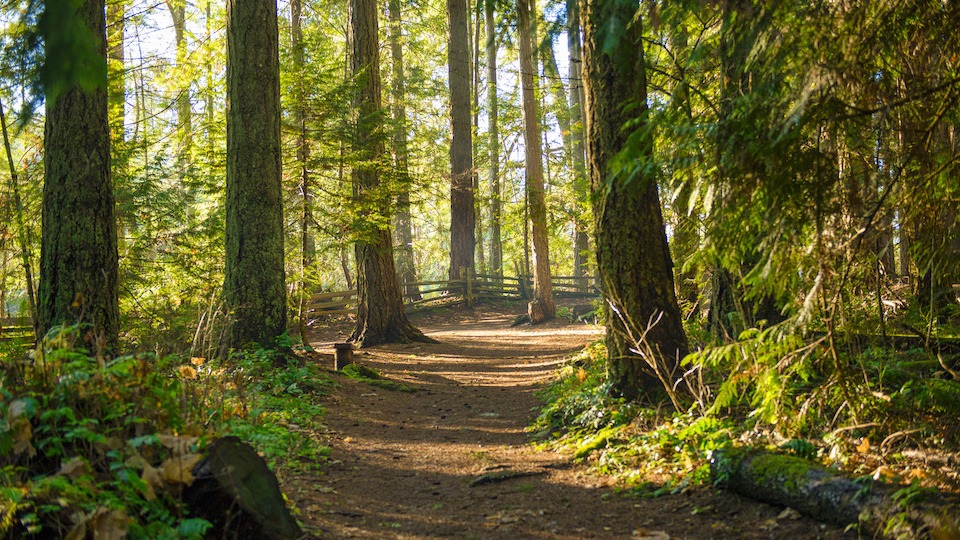A prescription from a doctor can (and should) be more than just a bottle of pills that you pick up at the pharmacy. And today, I’d like to tell you about one of my all-time favorite prescriptions…it’s one that I write over and over again and it’s one that I take myself nearly every day. You could even say I’m addicted…
The Japanese practice of “forest bathing” is medicine in the true sense of the word. In fact, modern research has demonstrated the benefits of spending time in the forest on the body and mind…especially when it comes to stress management, blood pressure, and markers of inflammation.
The woods offers a welcome break from the home or the office, and it offers up a bounty of sights, sounds, scents, textures, and tranquility. Forest bathing is a safe and effective prescription with no copayment and no side effects. It doesn’t get much better. Enjoy this article by my team at UpWellness about this effective practice.
Enjoy your bath,
-JL
Movement is critical for a healthy, happy life and a balanced mind and body. Movement in nature; however, is even more essential and could alleviate chronic pain and anxiety. Thanks to a newly popular practice known as forest bathing, more and more people are coming to recognize the benefit of being outside and the crucial role it plays in a calm, healthy state of being.
Exposure to trees and nature can:
- Boost the immune system
- Lower blood pressure
- Reduce stress
- Improve mood
- Increase the ability to focus, even in children with ADHD
- Accelerate recovery from surgery or illness
- Increase energy level
- Improve sleep
What is forest bathing?
Contrary to what the name may suggest, forest bathing is not going to the deepest part of the woods and rolling around in the dirt. It is simply a way of reconnecting with nature and spending time, away from the distractions of life, in a peaceful environment where you are mindful of the incredible natural world around you. Trained guides take participants on a guided walk (not hike) through a short stretch of woods where they help direct your attention to things like the sound of wind rushing through the trees or the feeling of leaves beneath your feet.
Forest therapy is inspired by the Japanese practice of Shinrin-Yoku, which translates to “forest bathing. In forest bathing, the goal isn’t to exercise and boost the heart rate, in fact, Amos Clifford the founder and director of the Association of Nature and Forest Therapy Guides and Programs says, “We’re not exercising, we’re moving slowly…Our typical walks are about three hours. We go maybe a quarter to a half a mile in that time, so we’re not hiking, you don’t have to be fit. We choose really easy trails. The ideal scenario is a fairly nearby forest with a fairly thick and developed canopy, where it’s quiet, the trail is very gentle, easy to get to, and there’s a stream.
Even in a three-hour walk, we see a reset of the nervous system, where people start coming back to a healthier baseline. They’re away from their devices, they’re not in traffic, they’re not watching the 24-hour news cycle. They’re very much in the present moment.
The body, in those circumstances, has this incredible capacity for healing itself.”
Clifford goes on to explain that he has seen many people find relief from chronic pain through forest therapy, along with increased feelings of joy and a transformed positive outlook on life. The benefits aren’t all in the mind either.
Boosts the immune system
Trees and plants put off airborne chemicals known as phytoncides that help protect them from insects and provide antifungal and antibacterial benefits that give plants an edge against disease. As we move through the forest, we breathe in some of these beneficial natural chemicals, and the body increases production and activity of a type of white blood cell called natural killer cells that kill tumor- and virus-infected cells.
Lowers blood pressure
According to numerous studies, spending time in nature has a unique ability to lower high blood pressure, no prescription medication needed. Being surrounded by trees and green space also reduces the stress hormone cortisol and lowers adrenaline levels, both of which can contribute to increased blood pressure and other health complications.
Experts recommend taking at least two hours out of your week to spend in nature. This can be four 30 minute walks broken up over a few days, or it can be a longer hike on the weekend. Do what works for you.
If you are interested in engaging in forest therapy, look for certified guides in your area, or choose an easy trail and get out on your own. Go with a friend or alone, leave your phone behind, and spend a few hours in the best therapy session possible…without spending a penny.
-The UpWellness Team









